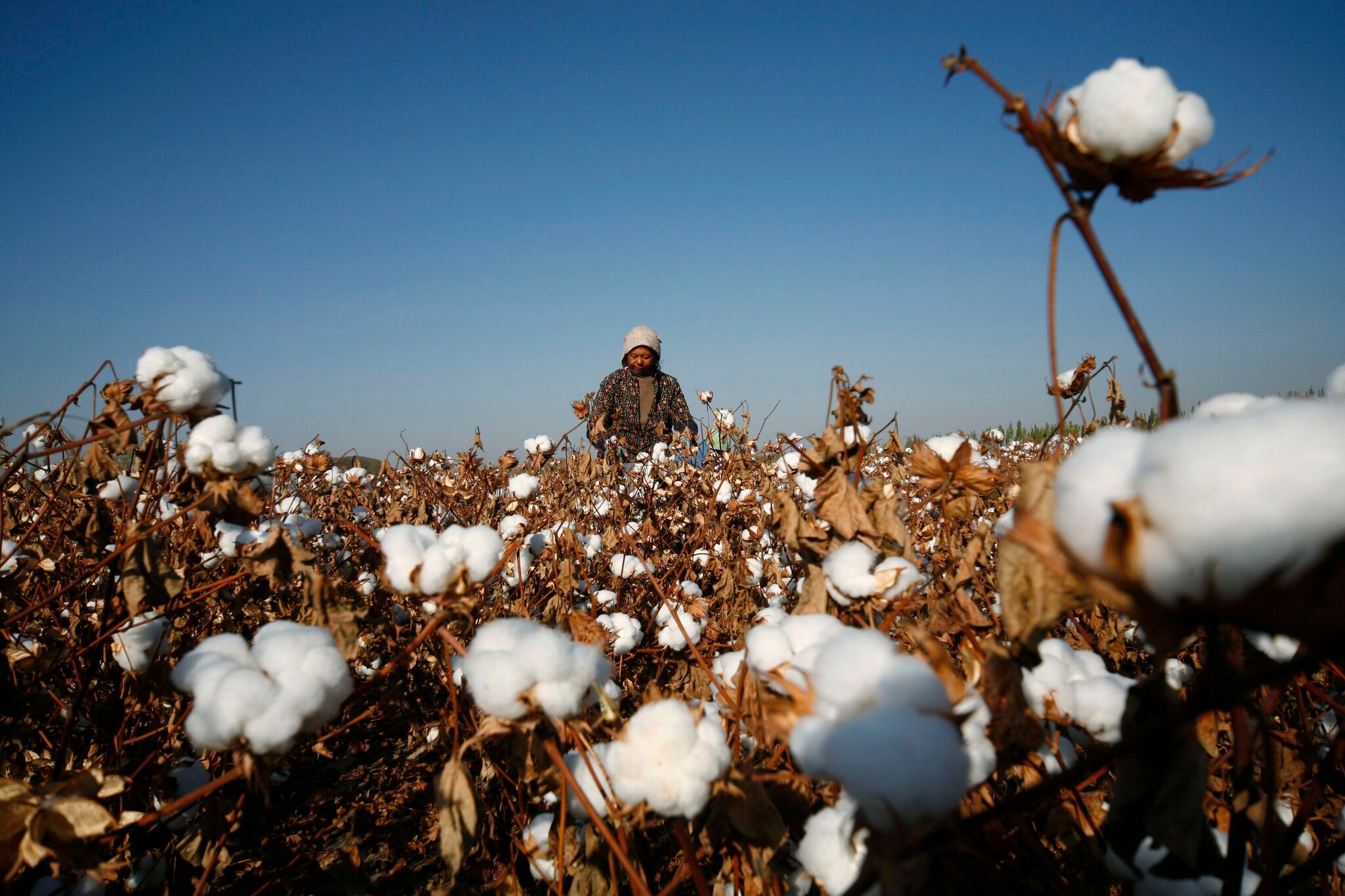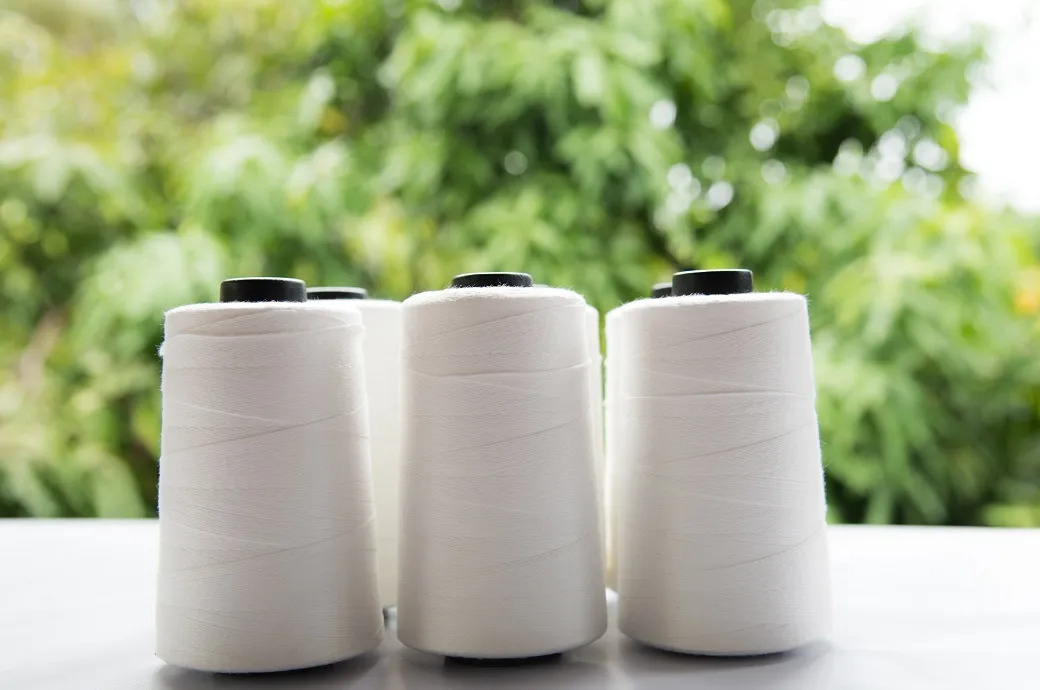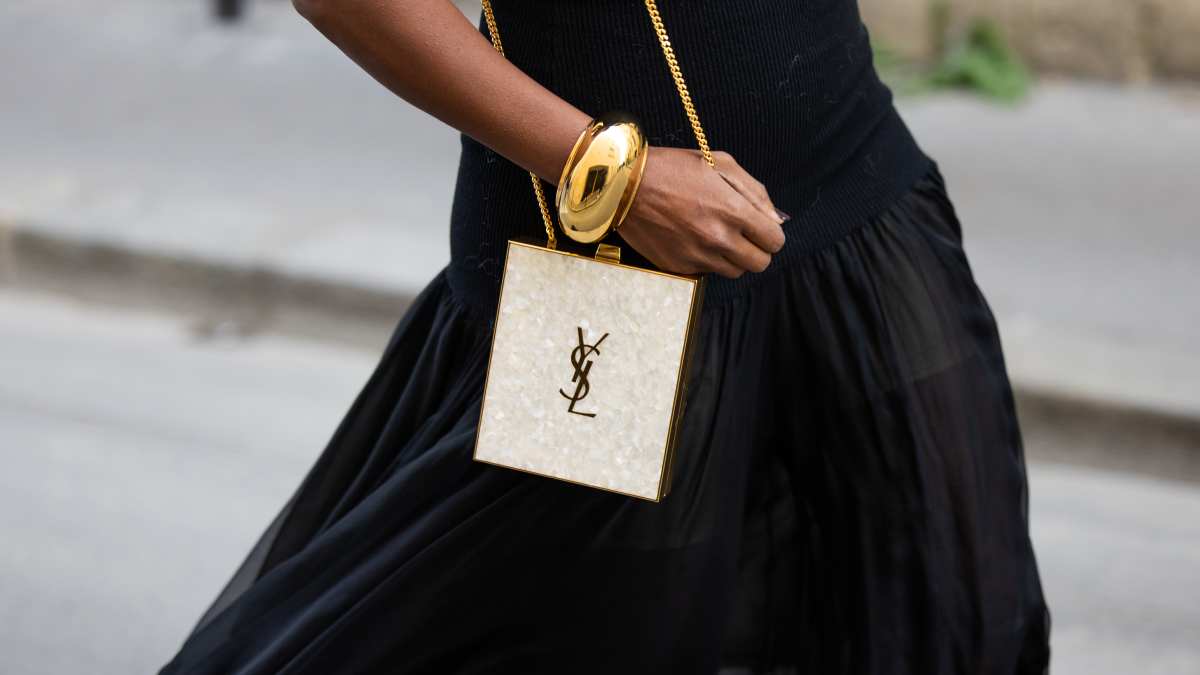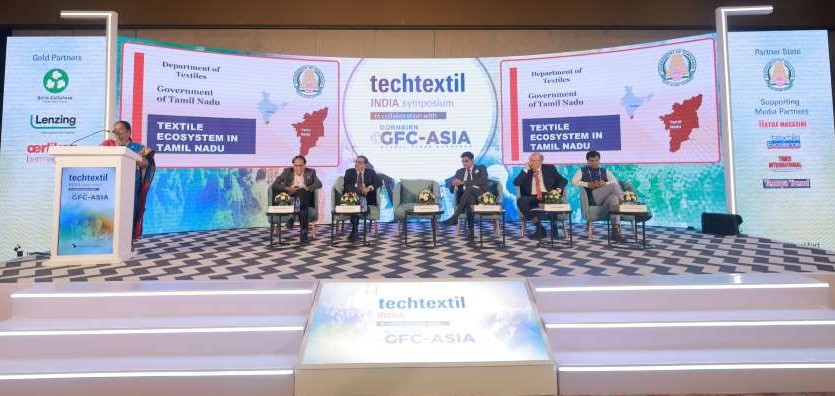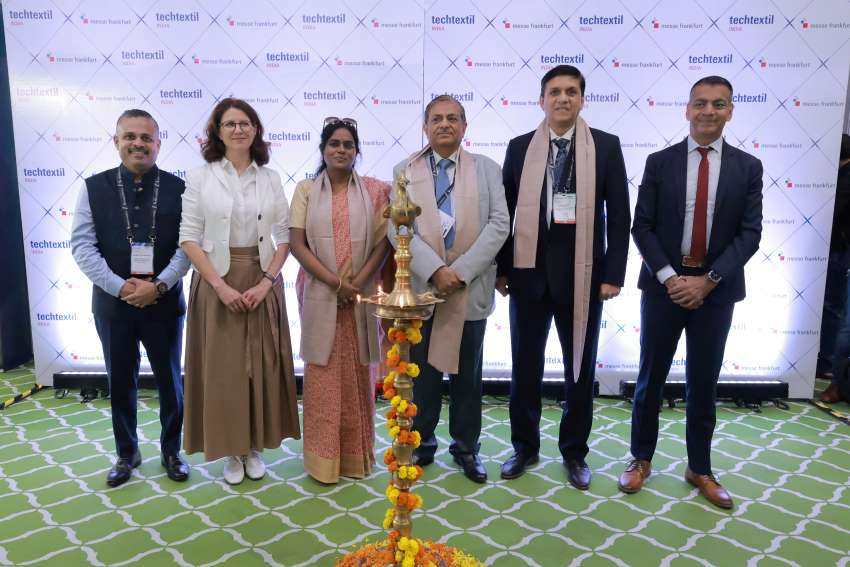FW
Global furniture giant IKEA reported a drop in its annual retail sales for the second year in a row, a result of its deliberate strategy to slash prices and attract cash-strapped consumers in a competitive market.
After raising prices during the pandemic due to supply chain issues, the world's largest furniture retailer has cut prices by 10 per cent on average over the past two years. This aggressive move aims to counter high inflation and weak housing markets worldwide, which have significantly reduced consumer demand for furniture and homeware.
For FY25, which ended on August 31, global IKEA retail sales fell 1 per cent (or 0.3 per cent when adjusted for currency effects) to $51.9 billion.
Despite the drop in revenue, the strategy appears to be moving more product: the total number of products sold increased by 3 per cent, and both customer numbers and store visits increased.
IKEA is currently absorbing higher import costs and has not yet raised prices in the US, despite increased tariffs on imports. The company is attempting to shoulder the extra cost but did not rule out future price increases, says Ring
Meanwhile, Ingka Group, the largest IKEA franchisee, which operates stores in 31 markets, reported its lowest annual sales since 2021, falling 1.6 per cent to €39 billion. However, Ingka also saw an increase, with quantities sold rising by 1.6 per cen. Jesper Brodin, CEO, Ingka expressed cautious optimism that consumer spending would eventually pick up as the impact of falling inflation and interest rates begins to take effect.
Exports of trousers and shorts by Bangladesh declined by 9.6 per cent to $5.02 billion during January–September 2025 period, according to the sourcing intelligence tool TexPro.
Exports to its largest market, Europe contracted by 9.6 per cent to $2.98 billion, representing 59.4 per cent of total shipments. This dip in European orders is attributed to slower retail sales, inflationary headwinds, and cautious buying by fashion brands amid geopolitical uncertainty and sluggish consumer spending.
North America emerged as the second-largest market, with exports declining by 2.5 per cent to $1.15 billion during the nine-months period and representing 22.9 per cent of total shipments.
Demand in the US market remained constrained by tighter consumer budgets and rising import tariffs, though Bangladesh gained slightly in market share as some buyers diversified sourcing from China.

In the complex world of polyester filament yarns, where POY (Partially Oriented Yarn) is the foundation and DTY (Drawn Textured Yarn) offers bulk and stretch, Fully Drawn Yarn (FDY) stands out as a finished, direct-use product with a unique and critical role. Unlike its counterparts, FDY's one-step, high-speed production process results in a smooth, strong, and lustrous yarn that requires no further processing. This singular characteristic makes it the yarn of choice for applications where a flawless, elegant finish is paramount.
The technical decision: FDY vs. DTY
The choice between FDY and DTY is not merely a preference but a fundamental technical decision that shapes the very character of the final fabric. As insights from SimYarn highlight, this is where a partner's expertise becomes invaluable.
FDY: With its high tensile strength and low elongation, FDY is ideal for creating fabrics with a smooth, flat, and drapey surface. Its compact, un-textured structure gives a distinct sheen, making it perfect for applications like silky linings, satin, and shiny upholstery. The yarn's dimensional stability ensures that fabrics made from it resist shrinking and deformation, which is crucial for maintaining the integrity of the end product.
DTY: In contrast, DTY's textured, bulky, and elastic nature is designed for flexibility and a softer feel. It is the go-to yarn for creating comfortable, bulky fabrics with a wool-like or cotton-like hand, such as those used in sportswear, flexible t-shirts, and casual wear.
The marketing and application challenge for FDY lies in educating buyers on this distinction. A fabric manufacturer seeking to produce a stretchy sports jersey would be making a bad investment by choosing FDY, just as a producer of high-end satin would be with DTY. This emphasizes the need for a solution-based approach, rather than just a product-centric one, where suppliers act as consultants to match the right yarn to the project's specific needs.
A market on the rise
The global Fully Drawn Yarn (FDY) market is forecasted to grow, largely due to evolving consumer preferences, technological advancements, and the expansion of key end-use industries. Recent market reports project a strong Compound Annual Growth Rate (CAGR) for the sector.
Table: The global FDY market at a glance
|
Market report source |
Market size (2024) |
Market size (forecast) |
Forecast period |
CAGR (%) |
|
Business Research Insights |
$11.97 bn |
$15.75 bn (by 2033) |
2025-33 |
3.1% |
|
Dataintelo |
$25 bn |
$42 bn (by 2032) |
2025-32 |
6.5% |
|
Market Insight Outlook |
$60.43 bn (by 2030) |
2023-30 |
7.8% |
Data compiled from multiple sources. Figures vary by methodology and forecast scope.
This growth is getting a boost due to by several factors. Foremost is the rise of the high-end consumer. The demand for high-quality, high-lustre, and durable fabrics in apparel and home textiles is a major market driver. FDY's ability to produce fabrics with a silky feel and excellent colorfastness makes it a preferred material for this segment. Growing use of technical textiles is another reason as FDY is finding increasing applications in technical textiles, including industrial sewing threads, filter cloths, and woven webbings, driven by its high strength and durability.
Also, innovations in production technology are leading to the creation of specialty FDY with enhanced functionalities like moisture-wicking, UV-resistance, and antibacterial properties, opening up new application avenues in sectors like sportswear and smart textiles. And the trend towards sustainability is boosting the demand for recycled PET FDY, with reports indicating a significant CAGR for this sub-segment.
India in the global FDY market
India is rapidly emerging as an important player in the global textile and apparel industry, with its polyester filament yarn (PFY) sector playing a crucial role. Its position is marked by strong domestic consumption and growing production capabilities, though challenges in the supply chain persist.
Production and consumption: India's synthetic fiber market is growing steadily, with polyester filament yarn accounting for a dominant share. The Indian polyester filament yarn market volume was estimated at over 2.5 million metric tonnes in 2024, with projections to exceed 3 million metric tonnes by 2030. This growth is due to rising disposable incomes and rapid urbanization, which have spurred demand for high-quality fabrics in apparel and home furnishings.
Global standing: India is an important producer and exporter, ranking third globally in polyester yarn exports, following China and Vietnam. The country's textile and apparel exports have shown resilience, and government initiatives like the Production-Linked Incentive (PLI) scheme and the PM MITRA Park Scheme are designed to further boost manufacturing and create a competitive ecosystem.
However, despite the positive outlook, India's FDY sector faces challenges. Reports indicate a significant proportion of filament yarn is still imported to meet domestic demand, suggesting a gap between installed capacity and the needs of a growing market. And rising raw material costs and stringent quality control regulations add to the operational pressures on manufacturers.
Table: India’s polyester filament yarn market
|
Metric |
Value (2024) |
Projection (2030) |
|
Total PFY Market Volume |
2.5 mn MT |
>3.0 million MT (Projected to exceed 3.06 million MT) |
|
India’s Rank in Global PFY Exports |
3rd (after China & Vietnam) |
Expected to improve |
|
Drivers |
Rising incomes, urbanization, apparel demand |
Athleisure/technical textiles, sustainability (rPET), government schemes |
|
Policy Support |
PLI & PM MITRA Schemes (Ongoing) |
Incentivizing large-scale manufacturing & value chain integration |
FDY’s popularity in home and technical textiles
The versatility of FDY is best illustrated through its diverse applications. While its use in apparel is well-known, its impact on home and technical textiles is equally significant. For example, FDY is a game-changer for home furnishings. Its smooth texture and color retention make it ideal for high-end bed linens, curtains, and upholstery, as seen in the offerings of leading manufacturers like Indorama. The yarn's durability ensures these products maintain their quality and appearance over time, providing long-term value to consumers.
Similarly for industrial applications, FDY's high tensile strength and resilience are indispensable. It is used in everything from conveyor belts and filter cloths to industrial sewing threads. Its robust properties ensure consistent performance in demanding environments, making it a reliable choice for manufacturers.
Thus FDY is far more than just a synthetic yarn; it is a specialized material that underpins the production of high-quality, durable, and aesthetically pleasing textiles. While the market faces challenges related to quality control and supply chain management, the growing importance of FDY and the strong growth of its application sectors especially in India point towards a future of continued expansion and innovation.
Chinese company, October4128 (BD) is set to invest $19.72 million to establish a high-end garments manufacturing industry at the BEPZA Economic Zone (BEPZA EZ) at Mirsharai in Chattogram.
The company signed an agreement to this effect with the Bangladesh Export Processing Zones Authority (BEPZA).
.The company will produce annually 3 million pieces of ski, snow sports, hunting and motor rider's gear, insulated winter coats, down jackets & pants, rain gear, work wear, running wear, yoga wear, and water-sportswear.
The project is expected to create employment opportunities for some 2,788 Bangladeshi nationals.
Major General Mohammad Moazzem Hossain, Executive Chairman, BEPZA says, this preferred investment and assured full cooperation to ensure smooth business operations. So far, 49 companies including October4128 (BD) have signed agreements to invest in the BEPZA Economic Zone, with a total proposed investment of around $ 1.08 billion.
Of them, six companies have already started production. BEPZA Economic Zone has thus emerged as one of the most attractive investment destinations in Bangladesh for both local and foreign investors.
The world's premier trade fair for home and contract textiles, Heimtextil 2026, is set to reunite the global industry in Frankfurt from January 13 to 16, 2026. Organized by Messe Frankfurt, the event will continue its tradition of strengthening ties with the Turkish textile sector.
At a press conference in Istanbul to promote the fair, Margit Herberth and Bettina Bär, Directors shared insights into global market transformation, emphasizing that geopolitical challenges, economic instability, inflation, cost pressures, declining consumer demand, and digitalization are the key forces reshaping the industry.
In a presentation titled ‘Lead the Change,’ Herberth highlighted how artificial intelligence (AI) is changing the game - from trends to innovation. The market is currently being shaped by two powerful factors: hyper-individualization and connectivity, she noted
AI profoundly impacts every field. It enables real-time hyper-personalization across products and services, strengthening the personal and emotional bond between manufacturers and consumers, Herberth stated. AI empowers businesses by facilitating and accelerating scalable value chains, production, and product development, allowing for ‘tailor-made offers faster and more authentically than ever before, she added.
Bettina Bär called Heimtextil a strategic partner for the sector’s transformation, providing a reliable platform where more than 3,100 companies from 65 countries showcase their solutions. The fair's layout has evolved to reflect market changes. The Hall 3.0 features the ‘among-all’ installation, along with wallpapers, carpets, curtains, and sun protection systems.
Hall 4.0 hosts the smart bedding segment with the new Sleep & Meet area while Halls 3.1 & 4.1 showcase upholstery and decorative fabrics.
Created by Alcova Milano, the Heimtextil Trends 26/27 will be presented in Hall 6.1. The theme, ‘Craft is a Verb,’ demonstrates, high technology and traditional craftsmanship are complementary, opening up new creative horizons.
Six core trends illustrate this fusion, including: Re:media (digital design and craftsmanship interaction), Visible co-work (AI initiates, humans complete), and Crafted irregularity (a counter-movement to AI’s perfection). The trend's color palette ranges from stable, natural tones like sand and olive to vibrant, digital accents such as acidic green and bright screen blue.
Danish fashion company Bestseller achieved a significant milestone by celebrating its 50th anniversary in the FY24–25, alongside reporting robust financial results.
Founded by Merete Bech Povlsen and Troels Holch Povlsen with a singlestore in Ringkobing, Denmark, Bestseller registered a 7 per cent Y-o-Y growth in revenue during FY24-25. The company’s pre-tax profit increased by 10 per cent to approximately $922.7 million.
The company has grown to over 2,800 retail stores and employs around 25,000 colleagues across 90 countries. Strategic investments made by the company under the leadership of Anders Holch Povlsen help drive responsible growth including increasing the share of preferred materials through the Fashion FWD strategy and increasing the share of preferred materials. The company’s innovation arm Invest FWD supports tech companies like Softwear Automation (automated garment production) and Matterr (polyester recycling).
Bestseller is the parent company for well-known brands such as Jack & Jones, Vero Moda, Only, and Name it.
India registered a steep decline of 14.8 percent in apparel exports during the July-September quarter of the FY25-26, according to a recent analysis by the Confederation of Indian Textile Industry (CITI).
Using estimates from the Press Information Bureau (PIB), this report shows, apparel exports declined from $3,636 million in Q2 FY2024-25 to $3,097 million in Q2 FY2025-26. This sharp contraction reflects persistent challenges in key export markets and sluggish global demand for clothing.
CITI's analysis further notes, during September 2025, India’s textiles exports registered a decrease of 10.45 per cent compared to the previous year, while apparel exports saw a similar drop of 10.14 per cent. Cumulatively, total exports of textiles and apparel in September 2025 lowered by 10.34 per cent over September 2024.
Despite the quarterly setback, the overall performance in H1, FY26, spanning April-September 2025 shows a modest cumulative growth of 3.42 per cent in apparel exports. This suggests a partial recovery occurred earlier in the fiscal year, though the pressure intensified later in the quarter.
The 10th Edition of the Hot Button Report by Canopy demonstrates the massive transformation in the global man-made cellulosic fiber (MMCF) supply chain since 2016.
The industry's most trusted tool for evaluating MMCF fiber sourcing, the Hot Button Report shows, the sector has moved from having zero low-risk Green Shirt producers in 2016 to 21 in 2025. It also went from having no commercial-scale Next Gen fiber lines to 16 available today. These findings prove that significant change in the fashion industry can happen in years, not decades.
Released in Lisbon, the 2025 Hot Button Report offers the most comprehensive look at how MMCF producers are eliminating sourcing from the world’s ancient and endangered forests while speeding up the shift to low-carbon, circular Next Gen alternatives. The report rates 98 per cent of global MMCF production using Canopy's recognizable ‘shirt’ system. The results show, almost 70 per cent of producers now earning Green, Partial Dark Green, or Dark Green status - a sharp improvement from just nine years ago.
The top spots in the ratings are shared by Lenzing and Tangshan Sanyou, with Aditya Birla close behind in second place. Other producers achieving Dark Green Shirt status include Jilin Chemical Fiber, Yibin Grace, and Xinxiang Chemical Fiber Co. (Bailu), all of whom made major strides in Next Gen integration last year, along with other industry leaders.
This year’s Report includes contributions from 30 global MMCF producers, including two new companies, bringing the total of Green Shirt-rated production to 54% in 2025.
According to Nicole Rycroft, Founder and Executive Director, Canopy, the leaders in the Hot Button are proving that investing in Next Gen solutions is essential for building resilient, low-carbon supply chains to meet brand expectations, reduce volatile raw material supply, and deliver long-term business value.
While all leading companies showed unique strengths, they all invested in advancing Next Gen fiber alternatives, which is crucial for reducing reliance on forests and improving supply chain resilience.
MI Demo and Saolon (formerly Mitsubishi) have moved up from Light Green to Partially Dark Green Shirts while Yibin Grace opened the first recycled dissolving pulp mill in China. Xinxiang Chemical Fibre (Bailu) launched a direct textile-to-textile MMCF facility, while Tangshan Sanyou debuted a testing facility for the same technology. Jilin Chemical Fiber introduced Reboocel, a new recycled bamboo pulp line. On the other hand, Tangshan Sanyou advanced the development of Next Gen Lyocell and Xinxiang Chemical Fiber opened a juncao grass MMCF facility.
In total, 16 individual Next Gen MMCF product lines, from 12 producers, are now commercially available.
The ‘Italia è Moda – Italian Fashion Days in the World’ (Giornate della Moda Italiana nel Mondo – GMIM) series is being held from October 10 to November 14, 2025. It will include events in Belo Horizonte, Rio de Janeiro, and São Paulo. Launched by the Minister of Foreign Affairs and International Cooperation, Antonio Tajani, within the framework of the Diplomacy for Growth, this initiative represents a key element in promoting Italian excellence abroad. Through its network of Embassies, Consulates, Italian Cultural Institutes, and Italian Trade Agency Offices, the Ministry of Foreign Affairs supports these efforts to enhance Made in Italy and foster its internationalization.
On this occasion, the MAECI (Ministry of Foreign Affairs and International Cooperation) – ICE (Italian Trade Agency) presented its ‘OpportunItaly’ campaign in Brazil for the first time. Part of the Export Action Plan, it promotes business connections between Italian companies and foreign operators through digital business matching services and content focused on strategic sectors of Made in Italy.
Following its earlier stages at the Italy Pavilion at Expo Osaka 2025 and in Dubai, as well as numerous promotional events organised by the Italian diplomatic-consular network over the past months (beginning with the Embassy in Athens), GMIM is now being held in Brazil.
In Belo Horizonte, Alessandro Cortese, Italian Ambassador to Brazil, inaugurated the exhibition ‘Italian SportDesign and more,’ organized by the Consulate General in collaboration with ICE-ITA Brazil (Italian Trade Agency – Brazil office), the Sportsystem Foundation, ANFAO (National Association of Italian Optical Manufacturers), and the Design School of the State University of Minas Gerais (UEMG).
In Rio de Janeiro, the Consulate General and ICE-ITA Brazil will organize the talk ‘Exporting La Dolce Vita – Beautiful and well-made: the potential of high-quality Italian products in the international arena’, in collaboration with the Federation of Industries of Rio de Janeiro (FIRJAN), hosted at the Palácio da Cidade.
The initiative is supported by Italian Trade Agency and in partnership with the main sector associations, including ANFAO, Camera Nazionale della Moda Italiana, Confapi Uniontessile, Confartigianato Moda, Confartigianato Orafi, CNA Federmoda, CNA Orafi, Confindustria Accessori Moda, Confindustria FEDERORAFI, Confindustria Moda – Federazione Tessile e Moda, Cosmetica Italia, and Altagamma.

The recent job cuts announced by Lenzing, a pioneer in sustainable cellulosic fibers, are a stark reflection of the complex challenges facing Europe's textile industry. While the global fiber market is growing, this growth is overwhelmingly driven by low-cost, high-volume production of synthetic fibers, primarily polyester, in Asia. Lenzing's struggles are a wake-up call, highlighting a fundamental disconnect between consumer aspirations for sustainability and the economic realities of a market dominated by fast fashion and price competition.
A tale of two realities
The global textile fiber market is projected to reach approximately $63.42 billion by 2030, growing at a Compound Annual Growth Rate (CAGR) of about 4.5 per cent from 2025. This growth is led by rising populations and incomes in emerging economies. However, this growth is not evenly distributed. The market is bifurcated into two distinct segments:
Synthetic fibers: This segment, led by polyester, holds the largest market share. In 2024, polyester production reached an estimated 78 million tons, accounting for nearly 60 per cent of all textile fibers. Its dominance is due to its low cost, versatility, and durability, making it the material of choice for the fast fashion industry.
Man-Made Cellulosic Fibers (MMCFs): This category, which includes Lenzing's flagship products like Lyocell (Tencel), is a smaller, more specialized market. While the Lyocell market is growing, due to a desire for sustainable alternatives, its market size was only about $1.12 billion in 2024. The high production costs of these fibers limit their large-scale adoption, particularly in price-sensitive markets.
The disparity in market share and scale between these two categories is profound. While Lyocell is celebrated for its eco-friendly credentials (derived from wood pulp, a renewable resource, and produced in a closed-loop system), it struggles to compete on price with polyester. This price gap is a major barrier for consumers and brands alike.
Lenzing's financial tightrope
Lenzing's financial performance showcases the pressure from this market dynamic. While the company has seen some recovery, it continues to face headwinds.
Table: Lenzing group financial data (2024-2025 H1)
Indicator H1 2024 H1 2025 Revenue €2.66 bn €1.34 bn EBITDA €395.4 mn €268.6 mn Net Result after Tax -€138.3 mn €15.2 mn Employees (FTE) 7,816 7,712
Despite a positive net result in the first half of 2025 and a successful performance program, the company’s need for further measures to respond to the lack of market recovery and the intense competition in Asia points to a deeper systemic issue. The announced layoffs of up to 500 jobs at its Austrian headquarters underscore the company's efforts to optimize its cost structure and remain competitive.
The outsourcing of administrative functions to countries like the Czech Republic and India further demonstrates the need to cut costs to an extent not previously seen, even for a company with a strong brand and a reputation for sustainability.
The rise of China and the challenge of industrial policy
China's role in the global textile landscape is an important factor in Lenzing's predicament. China is not only the world's largest exporter of textiles but has also become a major producer of chemical fibers, including viscose, a direct competitor to Lenzing's products.
Manufacturing prowess: China has developed a complete and vertically integrated textile supply chain, from raw materials like cotton and chemical fibers to finished garments.
Government support: State-driven initiatives, such as the "Made in China 2025" plan, have prioritized the development of high-end, intelligent, and green manufacturing, further boosting the sector.
Cost advantage: Lower labor costs, economies of scale, and efficient supply chains give Chinese manufacturers a significant competitive edge in global markets.
This has created a challenging environment for European producers like Lenzing. While brands in Europe and North America increasingly demand sustainable materials, the vast majority of textiles are still produced and consumed within a system that prioritizes speed and low cost, a model China has perfected.
The aspiration-action gap
A study by GlobeScan in Europe found a gap between consumer aspirations for sustainable fashion and their actual purchasing behavior. While 71 per cent of consumers expressed a desire to shop more sustainably, the primary barrier was the higher cost of sustainable fashion (cited by 41 per cent of respondents).
|
Barrier to Sustainable Fashion in Europe |
% of Consumers (Aspirants) |
|
Higher cost |
41% |
|
Difficulty identifying sustainable items |
27% |
|
Not knowing where to shop |
24% |
|
Lack of knowledge |
21% |
|
Skepticism about claims (greenwashing) |
19% |
Source: GlobeScan, 2025. Based on a survey of Gen Z and Millennial consumers in France, Germany, Italy, Sweden, and the UK.
This data reveals the core issue, the ‘green premium’. Consumers want to make better choices but are often unwilling or unable to pay the higher price required to support sustainable production models like Lenzing's. This puts companies like Lenzing in a difficult position, caught between high operating costs in Europe and the pressure to compete with a global market that values affordability above all else.
A wake-up call or the end of an era?
Lenzing’s situation is more than a simple business downturn; it's a symptom of a larger systemic failure. It’s a wake-up call for Europe. The continent cannot simply rely on green marketing and consumer goodwill to sustain its industrial base. What's needed is a concerted effort that combines:
New business models: Companies must innovate beyond the linear model of fast fashion. This includes embracing circularity, product-as-a-service, and on-demand manufacturing to reduce waste and create value in new ways.
Real transformation: The entire value chain, from raw material sourcing to retail, needs to be re-evaluated for sustainability and efficiency, rather than just relying on marginal improvements.
Industrial policy: Governments must play a role in creating a favorable environment for sustainable production. This could involve targeted subsidies, favorable regulations that penalize unsustainable practices, and investments in research and development to reduce the cost of eco-friendly materials.
Without such a strategic shift, Lenzing's predicament could very well be the beginning of the end for European fiber production, ceding the market entirely to low-cost Asian competitors. It poses a fundamental question: can Europe's commitment to sustainability translate into a viable economic model, or is it destined to be a niche luxury, disconnected from the realities of the global marketplace? The clocks are indeed ticking.

